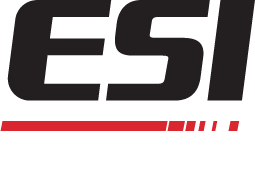Uv And EB Systems
Are UV And EB Systems The Same?
Electron beam (EB) and ultraviolet (UV) technologies are often grouped together and talked about in the same breath. But are they the same? The answer is no. Each technology has its own distinct properties and qualities. It's important to understand what differentiates the two in order to decide which technology will best suit your needs.
Similarities between EB and UV
Before we dive into what sets them apart, we should first understand how they are similar. Both ebeam and UV provide excellent print quality with VOC-free inks and offer high rub and chemical resistance. Their energy can be used to achieve rapid polymerization of monomers and oligomers. Simply put, these technologies offer exceptional performance properties compared to conventional coatings: they eliminate the need for spray powders, reduce the in process drying stages and allow for immediate fabrication once the printed material comes off the press.
Electron Beam vs. Ultraviolet Energy
As the name suggests, the electron beam employs electron energy, which is negatively charged and has mass. Most curing equipment accelerates electrons in the range of 70 to 300 kV.
UV systems make use of photons, which do not have mass. Physicists consider photons to have properties of both a particle and a wave. A photon’s energy is determined by its wavelength, which in most UV curing applications ranges from approximately 250 to 450 nm.
A conversion of energy units indicates that ebeam electrons are approximately 20,000 times more energetic than UV photons, even factoring in the energy loss that electrons experience as they pass through the window foil and air gap.
The Requirement of a Photoinitiator
Thanks to its greater energy, an electron beam has more than enough energy to break chemical bonds and therefore is a form of ionizing radiation that allows free radical curing to occur. UV is a nonionizing radiation, and therefore requires a photoinitiator for free radical curing to take place.
Food Compliance and Other Ink Differences
EB inks are entirely food compliant by nature. Comparatively, only some UV inks are considered food compliant and these tend to be significantly more expensive. UV inks have a much higher viscosity, ranging between 500 and 1,000 mPas compared with EB inks whose viscosity is similar to standard inks, between 120 and 280 mPas.
The cleanup of UV inks requires the use of solvents, whereas ebeam inks can be washed up with water. This represents not only a cost savings benefit, but also a health benefit to employees.
While both ultraviolet and Electron Beam technologies represent unparalleled advantages for printers, in terms of efficiencies and quality, knowing the individual characteristics and benefits that differentiate the two can make a crucial difference in your daily operations. If you are ready to see the benefits that EB curing can offer your printing business, feel free to contact us.

